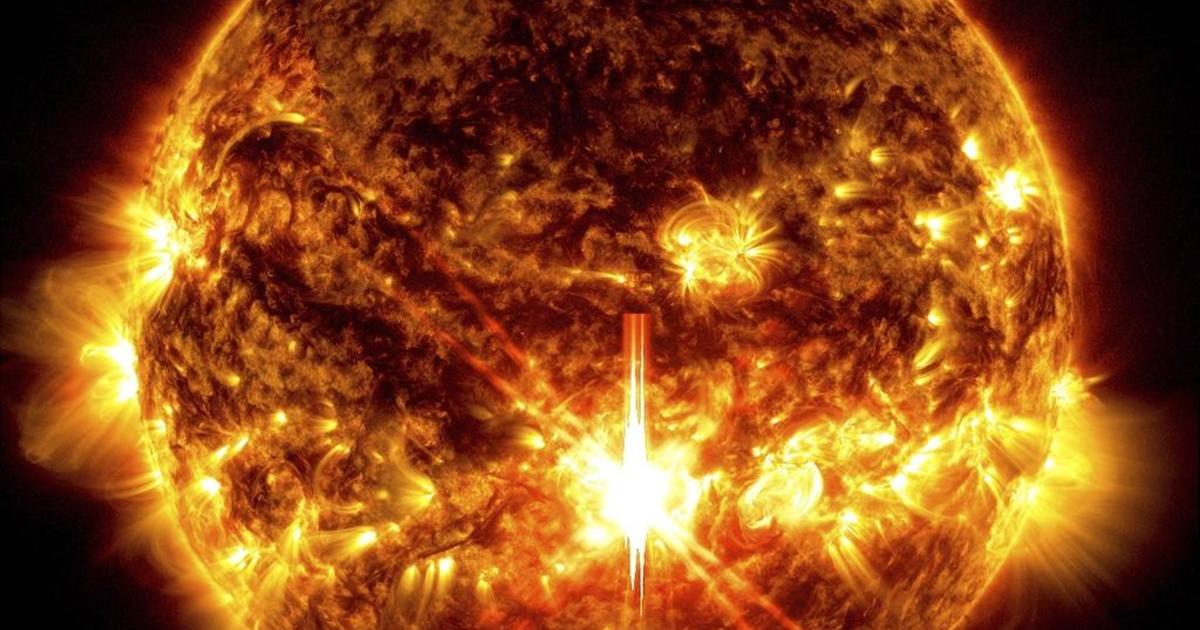A solar storm is on its way to Earth, potentially disrupting power grids and radio signals as the U.S. faces the aftermath of Hurricane Helene and prepares for Hurricane Milton. The National Oceanic and Atmospheric Administration (NOAA) has issued a severe geomagnetic storm watch for Thursday and Friday, following an outburst from the sun earlier this week. While forecasters don’t expect the storm to be as powerful as the one in May, which was the strongest in over two decades, they are taking precautions to minimize potential disruption.
A Potentially Powerful Solar Storm Approaches Earth
The impending storm is a result of a coronal mass ejection (CME), a burst of solar plasma and magnetic field that erupts from the sun’s atmosphere. When this solar material reaches Earth, it can interact with our planet’s magnetic field, causing geomagnetic storms. While these storms are generally harmless, they can have a significant impact on technology, especially power grids and communication systems.
Potential Disruptions and Impacts
The NOAA has alerted power plant operators, spacecraft operators, and the Federal Emergency Management Agency (FEMA) to take precautions in anticipation of the storm’s arrival. The agency is particularly concerned about the impact on power grids in areas affected by Hurricane Helene, as these grids might be more vulnerable to disruption due to recent stress.
Monitoring the Storm and Mitigation Efforts
NOAA scientists are closely monitoring the approaching solar storm using spacecraft stationed near Earth. The agency will be able to accurately gauge the strength of the storm when it is about 1 million miles away. While the current forecast suggests a less severe storm compared to May’s, NOAA is still taking precautionary measures.
Potential Northern Lights Display
The solar storm may bring a beautiful side effect: an extended aurora display in the Northern Hemisphere. These auroras, or Northern Lights, are typically observed in higher latitudes but might be visible as far south as the lower Midwest and Northern California. This phenomenon occurs when charged particles from the sun interact with Earth’s atmosphere, causing vibrant, colorful displays.
Aurora Viewing Tips
For those hoping to catch a glimpse of the Northern Lights, experts suggest using smartphone cameras for photography, as these devices are often capable of capturing aurora displays that human eyes cannot perceive.
The Sun’s Activity and Solar Cycle
The recent solar storm is just one manifestation of the sun’s current activity. The sun is in the peak of its 11-year cycle, during which it experiences periods of increased solar flares, coronal mass ejections, and other forms of activity. While this activity poses some challenges for technology on Earth, it also provides scientists with valuable insights into the behavior of our star and its influence on our planet.
Take Away Points
- A solar storm is expected to hit Earth, potentially disrupting power grids and radio signals.
- NOAA has issued a severe geomagnetic storm watch for Thursday and Friday.
- The storm may bring a display of Northern Lights visible in the lower Midwest and Northern California.
- The sun is in the peak of its 11-year cycle, resulting in increased solar activity.
- The solar storm’s intensity will be confirmed when it is 1 million miles from Earth, allowing for more accurate assessment of its potential impact.




